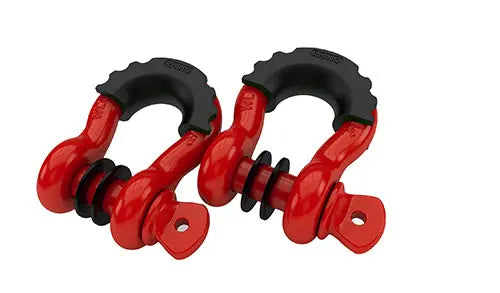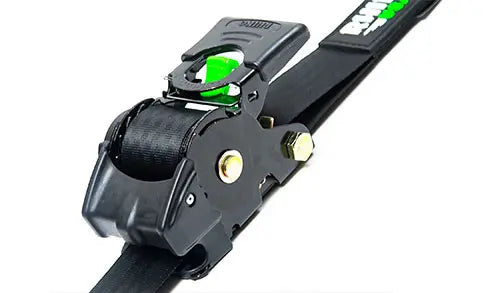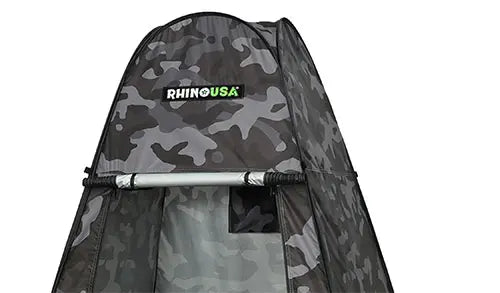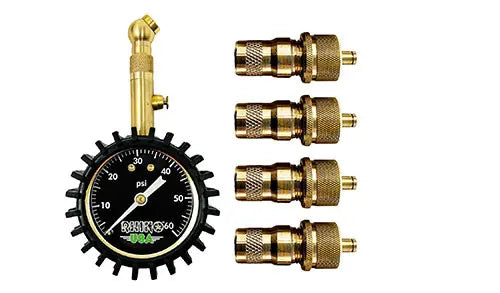Preparing for an adventure can be an exciting endeavor, and you know that having extra space to store your belongings can be a game-changer. That's where rooftop cargo bags come in handy – they offer the convenience of additional storage without sacrificing space inside your vehicle. The key to safe and seamless travel is to ensure that your cargo bag is properly secured. This not only guarantees the safety of your belongings but also the well-being of fellow travelers on the road. With this in mind, let's dive into a foolproof guide on securing your rooftop cargo bag.
As you embark on your journey, you want to be confident that your cargo bag is securely fastened to your vehicle. This means evenly distributing the weight of your items, using high-quality tie-downs or straps to hold the bag firmly in place, and avoiding any shifting during transport. Moreover, it's crucial to protect your belongings from potential weather conditions to ensure undamaged and safe arrival at your destination. This may involve investing in waterproof cargo bags or protective covers to shield your items from the elements.
A properly secured rooftop cargo bag not only keeps your belongings safe, but it ensures a smoother and more enjoyable driving experience. By following this straightforward guide, you'll be well-equipped to head out on your next adventure with the assurance that your cargo bag is secure and stable. So, gear up, hit the road, and experience the joys of traveling worry-free.
Choose the Right Cargo Bag
To properly secure a rooftop cargo bag, you should start by selecting a high-quality cargo bag designed for roof racks. Look for durable materials like heavy-duty canvas or nylon that can withstand various weather conditions and protect your belongings from moisture and dust.
When choosing your cargo bag, consider the following factors:
-
Size: Select a cargo bag that fits your vehicle’s roof and meets your storage needs. Make sure it does not obstruct your line of sight when driving, and it does not extend beyond the roof edges. Measure your roof dimensions and consult the cargo bag's specifications to ensure compatibility.
-
Installation method: Different cargo bags require various installation methods. Some bags come with integrated straps, while others might need additional hardware, such as a roof rack or crossbars, to be properly secured. Determine the preferred installation method based on your vehicle's existing equipment and the manufacturer's recommendations.
-
Weather resistance: A good cargo bag should be able to withstand harsh weather conditions, including heavy rain, snow, and strong winds. Opt for a well-designed, waterproof, and UV-resistant bag to keep your belongings safe and dry.
-
Load capacity: Your vehicle's roof and cargo bag have specific weight limits that must be observed to avoid overloading and potential damage. Familiarize yourself with these limits by consulting your vehicle's owner's manual and the cargo bag's specifications. Load capacities for vehicles typically range from 110 to 165 lbs (50-75 kg), while cargo bags can hold between 75 and 150 lbs (34-68 kg) of items.
By considering these factors, you can confidently choose the right cargo bag for your needs and ensure a safe and secure travel experience.
Inspect Your Roof Rack
Before setting out on any journey, it's crucial to take the time to inspect your roof rack to ensure a safe and worry-free trip. A thorough examination of your roof rack will allow you to identify and address any potential problems before they cause inconvenience or, worse, safety hazards.
Look for signs of damage or rust that could compromise the strength of your roof rack. Keep an eye out for bent, cracked, or corroded components. These issues could weaken the structural integrity of your roof rack and put your cargo at risk during transport.
While inspecting the roof rack, tighten loose bolts and screws as needed. Loose connections may cause your cargo bag to shift during your trip, leading to unstable and unsafe driving conditions. Also, replace any worn-out components that could lead to malfunctions or improper securing of your rooftop cargo bag.
Following these steps for a thorough inspection, your roof rack will be in prime condition to safely and securely transport your rooftop cargo bag. Remember, it's always better to uncover and address any issues before hitting the road. Happy travels!
Positioning Matters
Proper positioning of the cargo bag is crucial for stability and aerodynamics. It is essential to place the bag in the center of your roof rack to ensure optimal balance and safety. By evenly distributing the weight of your items inside the cargo bag, you can prevent any imbalances or strains on your vehicle.
To maintain a good balance and secure positioning, follow these guidelines:
-
Distribute weight evenly throughout the bag, with heavier items placed at the bottom and lighter items on top.
-
Use packing aids such as packing cubes or bags to keep items organized and to avoid shifting during transport.
-
Avoid overhangs by ensuring that the cargo bag does not extend too far off the sides or front of your vehicle. Overhanging cargo can affect handling and fuel efficiency.
Taking care of these details will not only make your road trip smoother but also help in maintaining the aerodynamics of your vehicle. Remember to always double-check your cargo bag's positioning and fastening before hitting the road. Following these simple yet effective tips will ensure a safe and enjoyable journey.
Secure the Bag
When preparing to securely fasten your rooftop cargo bag, it's important to follow the proper steps to ensure the safety of both your belongings and your vehicle.
First and foremost, distribute the weight evenly within the cargo bag. This will help maintain balance and reduce the risk of tipping or damage to your car. Make use of compartments, if available, and place heavier items at the bottom and lighter items on top.
Next, check your car's roof rack and cargo bag limits. Be sure not to exceed the weight limits provided by the manufacturer as overloading can lead to serious damage.
Now, you'll want to attach the cargo bag to your roof rack using the built-in straps or attachment points provided with the bag. Ensure that the straps are properly threaded and tightened, eliminating any slack. Be careful not to over-tighten, as this could damage both the bag and the roof rack.
If your roof rack has crossbars, arrange them in an optimal position as per the manufacturer's instructions. This will provide better support for the cargo bag.
For added security, consider using additional tie-downs or straps to prevent the cargo bag from shifting during transport. Secure these attachments to the roof rack to provide extra stability.
To protect your car and prevent scratches, place an anti-slip mat between the cargo bag and your vehicle's roof. This will not only help keep the cargo bag in place but also safeguard your car's paint.
Finally, don't forget to double-check the cargo bag's position and securement once everything is set up. Look for any signs of sagging or shifting and make adjustments as necessary to ensure that it stays in place while on the road.
By following these steps, you can be confident that your rooftop cargo bag is safely fastened and your belongings are secure as you embark on your journey.
Add Extra Security
For added peace of mind, consider implementing extra security measures to ensure the cargo bag is safe and your cargo is transported securely. Utilizing these accessories can significantly reduce the risk of your cargo bag becoming loose or shifting, especially on rough terrain or at high speeds.
Carabiner Clips: Carabiner clips are strong, durable, and easily attachable to your rooftop bag and roof rack. By using these clips, you can reinforce the security of your bag and maintain its position throughout your journey. Additionally, carabiner clips are widely available and can be obtained at affordable prices, making them an excellent addition to your cargo transportation arsenal.
Cargo Nets: Another useful accessory is a cargo net, which can be draped over your cargo bag, providing an extra layer of protection. Cargo nets ensure that your items stay in place and do not shift during transit. They usually come with adjustable hooks or buckles, allowing you to customize the fit and secure your belongings with ease.
Here's a summary of the benefits of these extra security measures for your rooftop cargo bag:
- Increased safety and security for your belongings
- Reduced risk of shifting or loosening while driving
- Cost-effective solutions for added peace of mind
In conclusion, investing in additional security measures, such as carabiner clips and cargo nets, can enhance the stability and security of your rooftop cargo bag. By employing these accessories, you can focus on enjoying your road trip, and rest assured that your belongings are safely stored and secured atop your vehicle.
Protect Against Theft
Protecting your rooftop cargo bag against theft is crucial for ensuring the security of your belongings during your travels. There are several ways to safeguard your cargo bag against potential theft.
Choose a Bag with Lockable Zippers: Invest in a rooftop cargo bag that features lockable zippers. This will make it more difficult for would-be thieves to gain access to your belongings. If your current bag does not have lockable zippers, you can purchase a padlock or combination lock that can be looped through the zippers to provide added security.
Secure the Bag to Your Roof Rack: Properly securing your cargo bag to the roof rack not only prevents it from shifting during transport but also makes it harder for thieves to remove the bag from your vehicle. Use strong tie-downs or straps to firmly attach the bag and follow the manufacturer's instructions to ensure it won't be easily removed.
Keep Valuables Out of Sight: When packing your cargo bag, place valuable items towards the bottom and out of view. This will make it less tempting for opportunistic thieves who might try to steal your belongings.
Park in Well-Lit Areas: Whenever possible, park your vehicle in well-lit areas or places with a lot of foot traffic. This provides an added deterrent against theft as it increases the chances of a thief being caught in the act.
Remove the Bag When Not in Use: When you reach your destination or if you plan to park for an extended period, consider removing your rooftop cargo bag from your vehicle. This will reduce the risk of theft and also protect your bag from potential damage due to exposure to the elements.
By taking these steps, you can minimize the risk of theft and keep your belongings secure during your journey.
Test for Stability
Before embarking on your journey, it's important to perform a thorough stability test to ensure your rooftop cargo bag is securely fastened and won't cause any issues during transit. Follow these steps to check the stability of your cargo bag:
-
Gently tug from different angles: Give the cargo bag a gentle pull from various directions, ensuring that there is no movement or loosening of straps. This will help confirm that the bag is firmly attached to your vehicle.
-
Inspect the straps: Make sure your straps are not twisted or tangled, and they are evenly tightened across the cargo bag. Twisted or uneven straps may lead to instability or even total failure during transport.
-
Check the weight distribution: Look into the rooftop cargo bag to ensure that the items inside are evenly distributed. A balanced weight distribution will help prevent shifting during transit and maintain stability.
-
Verify the bag's position: Confirm that the cargo bag is properly centered on your vehicle's roof, without excessive overhang. This helps maintain the bag's stability and minimizes the risk of any potential issues.
-
Monitor suction cups (if applicable): In case your roof bag is attached using suction cups, make sure they are properly adhered to the vehicle's roof and there's no visible damage or lifting. Reapply the suction cups if necessary.
After performing these stability tests, if everything feels secure and tightly fastened, you can confidently proceed with your journey, knowing that your rooftop cargo bag is securely in place. Remember to periodically check your rooftop cargo bag while on the road, especially after prolonged driving or in varying weather conditions, to ensure continued stability and security.
Monitor During Transit
During your journey, it's essential to periodically check the cargo bag, especially after encountering rough roads or adverse weather conditions. Keeping an eye on the rooftop cargo bag ensures both your safety and the security of your belongings.
-
Observe for any signs of the bag loosening or shifting. In case you notice anything unusual, pull over safely as soon as possible.
-
When pulled over, inspect the cargo bag thoroughly and re-secure it if needed. Make sure the straps or tie-downs are still tight and properly fastened.
- In addition, check for any damage or wear on your cargo bag. If there is significant damage, consider replacing or repairing the bag before continuing your journey.
While driving, it's also a good idea to maintain consistent speeds and avoid sudden turns or abrupt stops, as these actions can cause the cargo bag to become unstable. By monitoring your cargo bag during transit and addressing any concerns immediately, you can ensure a stress-free and safe trip with your rooftop cargo bag securely in place.
Unload with Care
When you reach your destination, it is important to unload your rooftop cargo bag with care. This will not only ensure the safety of your belongings but also prevent any sudden movements that could destabilize your vehicle. Follow these steps to unload your rooftop cargo bag properly:
-
Stay organized: As you carefully remove each item from the bag, remember to keep track of all your possessions to avoid misplacement or damage.
-
Distribute weight evenly: When you unpack, remember to maintain your vehicle's balance. Gradually remove items from both ends of the bag to prevent any sudden shifts in weight.
-
Be mindful of surroundings: Ensure your vehicle is parked in a safe and spacious area with minimal risk of potential hazards.
-
Check for damage or wear: Inspect your cargo bag and vehicle's roof rack or crossbars for any signs of wear, damage, or loosening of straps. Address any concerns immediately before using your cargo bag again.
-
Detach the cargo bag: Once all items have been removed from your rooftop cargo bag, carefully follow the manufacturer's instructions to detach it from the roof rack. This typically involves loosening and unfastening any straps or clamps used to secure the bag.
-
Store your cargo bag: Properly store your cargo bag in a cool, dry place when not in use to prolong its lifespan and ensure optimal performance for future trips.
By cautiously unloading your rooftop cargo bag and adhering to these steps, you can keep your belongings safe and secure throughout your journey.
Store Properly When Not in Use
After a successful journey with your rooftop cargo bag, it's essential to store it when not in use properly. Following a few simple steps ensures your cargo bag remains in great condition and ready for your next adventure.
First, make sure you clean the cargo bag thoroughly. Remove any dirt, debris, or moisture that may have accumulated during your travels. Use a mild detergent and a soft cloth to clean the surface gently. Rinse with water and allow it to air dry completely before storage.
Next, find a suitable storage location for your cargo bag. The ideal storage area should be:
- Clean and dry
- Away from direct sunlight
- Temperature-controlled
- Free from sharp objects or potential hazards
To prolong the life of your cargo bag and maintain its functionality, consider placing it in a protective storage bag or using a cover to shield it from dust and potential damage.
Lastly, when storing your rooftop cargo bag, properly fold or roll it to prevent creases or damage to the material. Follow the manufacturer's instructions for folding or rolling, as each bag may have specific requirements. It's a good practice to store your cargo bag while maintaining its shape, potentially using packing straps or bands to keep it secure in the storage area.
By following these storage practices, you'll ensure that your rooftop cargo bag remains in excellent condition, making it a reliable travel companion for years.
Conclusion:
By following these essential guidelines, you can ensure a safe and secure rooftop cargo bag experience. Firstly, properly distribute the weight of your items so that your vehicle remains stable and there is no risk of damage. It's crucial to avoid overloading and adhere to the weight limits specified by the manufacturer.
Take time to pack your items carefully. Group them by size, weight, and fragility, placing heavier items at the bottom and lighter, more delicate items on top. Using packing cubes or bags is an excellent way to organize similar items and maximize space.
Properly secure your cargo bag. Use tie-downs or straps to prevent shifting during transit, and follow the manufacturer's instructions closely. Consider using an anti-slip mat beneath the bag to prevent scratches and ensure added security.
Finally, regularly check your cargo bag throughout your journey. Inspect the straps for any signs of wear, check the items inside to ensure they remain secure, and confirm that your cargo bag is firmly attached to your vehicle.
By adhering to these best practices, you can enjoy the additional storage space provided by a rooftop cargo bag, while ensuring a safe and smooth journey for both you and your fellow travelers.

















